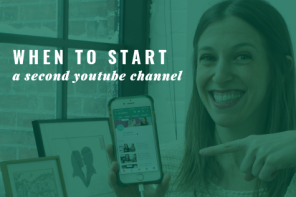Are you looking to build an engaged and loyal tribe online? Have you considered using Facebook groups?
Unlike pages, groups allow businesses to create a two-sided conversation on Facebook.
Facebook groups are a great solution for businesses that are looking to create a loyal and engaged community of users.
This post is going to dive into what distinguishes a group from a page on Facebook, the best uses for groups and how you can go about creating one for your business.
Features:
Groups on Facebook are different than pages when it comes to visibility and engagement.
Groups can be public, closed or secret; through the settings, you decide whether you want your group to be visible to everyone on Facebook or secret. You also decide whether you want users to be able to join automatically or request to become a member of the group.
Open groups, where anyone can join, tend to have a large number of users.
Private groups, where people must request access to join, have a level of exclusivity to them, making them ideal for membership sites.
How to make one:
When creating a group, you’ll want to start with your purpose: why are you creating a group in the first place. Be clear on exactly what you are looking to create or achieve so that you’re able to measure the effectiveness of the group.
Once you have a goal in place, you want to start building the group from the ground-up. This means setting up rules for the group and structuring privacy settings and membership approval; this is the part where you decide whether your group is open or private, and how you want users to join it.
Once you’ve set those parameters, you want to create a description for the group. Be detailed so that users are able to vet immediately whether this a group that they would benefit from joining.
After the description, it’s time to create rules for the group. Be clear on whether users are allowed to promote themselves and their business or whether this is a value-add group only. Setting rules will be critical to ensuring the group provides value to it’s members.
The next thing to do for your group is to set permissions for group users, and pick a type of group for classification purposes.
Finally, you’ll want to brand your group. Set a logo and cover photo that matches/mirrors the look of your brand. (The cover photo should be 784×250)
Now that you’ve made the group, you’re going to want to download the Facebook groups app to your phone so that you can manage and engage with your group on the go!
Functionality:
Once you’ve created a group, it’s time to start using it to move the needle on your business goals.
Below are a number of different ways that you can use your group to create value:
- Topics: Focus on a specific industry or type of content to share repeatedly. Share content and news from industry influencers to build relationships with them. You want to post good content in this group in order to give members a reason to engage in discussions.
- Add-ons: Use your group to give past customers special product add-ons such as free guides or giveaways. With this type of group, you would set it to closed/private so that only individuals who you desire are invited to the group to get this exclusive content. The type of group would be set to buy/sell/trade.
- Customer support: Provide answers to frequently asked questions and/or product testimonials and tutorials for customers. Streamline support services through this group and direct new and old customers here as a support portal.
- File sharing: Collaborate with your team by making files available by posting & pinning them to the top. This is great to use for internal marketing and/or development teams.
- Brainstorming & collaboration: Invite loyal & engaged customers to a private group to facilitate brainstorming and collaboration for new product releases. Ask your best customers to share testimonials & feedback on products to serve as a think tank for your organization.
What do you think? Have you used Facebook groups? What uses do you find work best?
Comment below!





